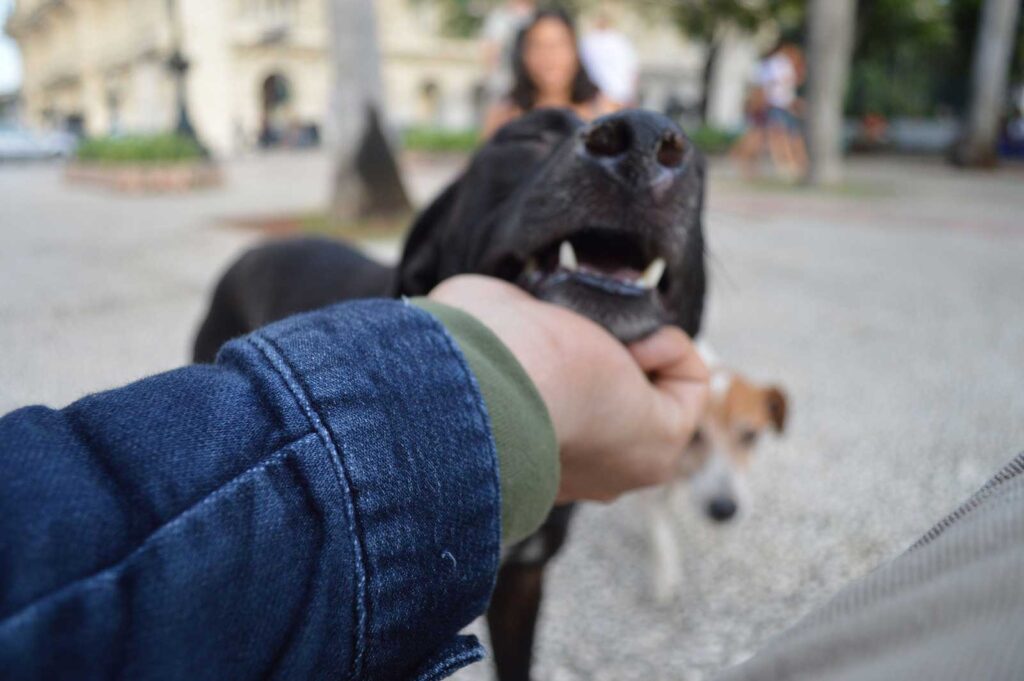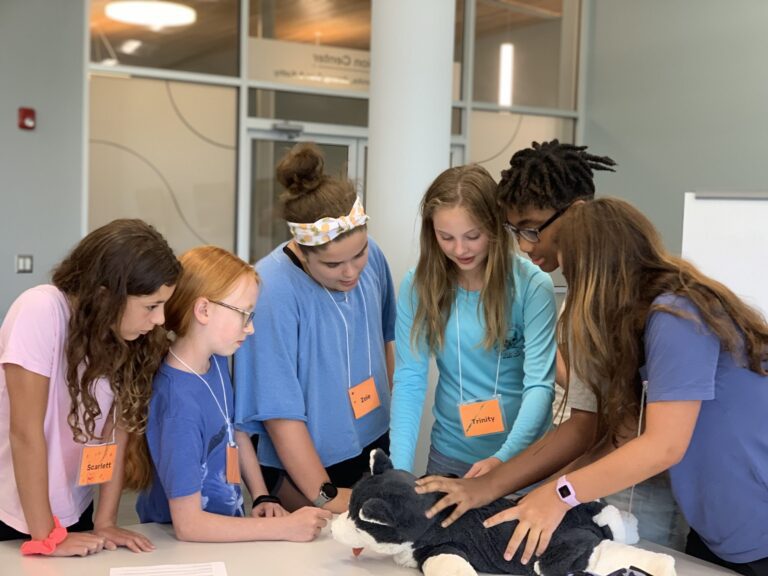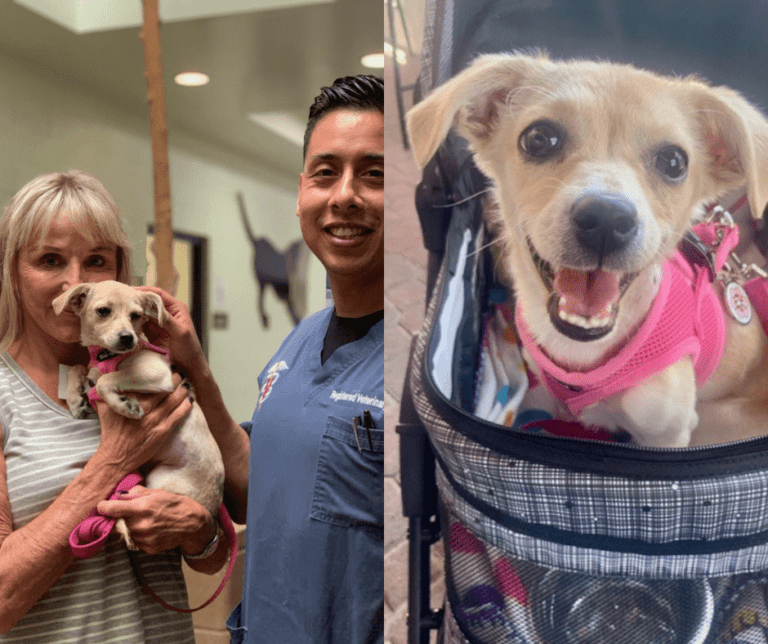How Microchips Work

As you may have noticed, at Found Animals, we love microchips! It’s not just us – most shelters, animal welfare organizations, and rescue groups will tell you that pet microchipping is important, but what does it actually do? We put together an illustrated guide to show you visual learners exactly how microchips work.
Since the chip and scanner only provide an ID number, each pet owner has to keep his/her contact information registered in a national database for the chip to work.
A microchip is a tiny piece of electronic equipment about the size of a grain of rice. Much of that small space holds a coiled copper antenna; the actual “chip” itself is only a millimeter or two across. The whole thing is encased in a biocompatible glass or polymer casing, allowing the microchip to integrate safely into the pet’s body (this great visual by HowStuffWorks shows the different components in a pet microchip). A vet or RVT implants this chip under the loose skin between a pet’s shoulder blades using a sterile syringe. The implantation process is very quick and pretty similar to administering a vaccine. Pets usually don’t even notice they’re being chipped.

The microchip is a passive transponder, which means that it has no power source of its own, it doesn’t move, and it only activates when powered by a signal from an external device. In other words, microchips by themselves are sort of dull. They basically just sit there waiting for something to happen. (Picture yourself on a rainy weekend, curled up on the couch with a bag of cookies, watching bad TV. Now replace yourself with a microchip, imagine your couch being a pet’s subcutaneous shoulder region, take away the cookies and the TV, and you get the idea.)
Obviously, no one can see that the chip’s in there without using X-ray goggles. (That’s why pets should always be wearing external ID as well as a microchip.) The chip itself can’t even provide your contact info; all it holds is a number. It just hangs out inside your dog or cat hoping someone will scan it with a universal scanner and give it the external power it needs to announce its number. Pets are typically only scanned during vet visits or if they wind up at an animal shelter, so the chips usually have to wait quite a while.
When a scanner sends its signal to activate or “energize” a microchip, it will do so on one of three radio frequencies: 125kHz, 128kHz, or 134.2kHz. U.S. microchips have been made on each of these three frequencies, and a chip will only activate when scanned with its matching frequency. If this seems like a silly way to do things – well, it is! The microchip system constitutes a network economy, meaning that it only works when everyone’s technology communicates effectively. To make the most of microchipping, we should all be using the same frequency of chip and the same frequency of scanner. Someday this will probably be the case, as many countries have already adopted and mandated the ISO Standard microchip frequency of 134.2kHz. In the U.S., we’re a little behind the times. We have to use universal scanners that can scan all three different frequencies at once, so we don’t miss chips. They’re more expensive to make than single-frequency scanners, which is a bummer, but it’s the only way to guarantee you’re picking up everything.
Of course, there’s one more key piece of the microchip pie: the registration. Since the chip and scanner only provide an ID number, each pet owner has to keep his/her contact information registered in a national database for the chip to work. If the chip number isn’t associated with owner information, the shelter or vet will have no idea who a microchipped pet belongs to, or how to get it home. That’s the bad news of what can go wrong with microchipping. The good news is that when a microchip is registered and up-to-date, it will make reunification much easier! Shelter statistics confirm that pets are way more likely to make it home if they carry a microchip: microchipped dogs are 2.4 times more likely to get back to their families; microchipped cats are 21.4 times more likely to be reunited! It’s a no-brainer.
Depending on which database holds the pet owner’s contact information, the process for actually contacting that owner will vary. Many registries require the finding shelter, vet, or Good Samaritan to call a customer service phone line (who doesn’t love a good ol’ fashioned call to customer service?). At that point, some will place the finder on hold while they try to conference in the pet’s owner; others will provide a phone number or address for the owner and leave the task of making contact up to the finder.
At Found Animals, we make use of existing communications technology to automate the contact process – the finder can visit our website, search the microchip, and instantly start what we call “Found Pet Alerts®:” a four-day series of automated phone calls, text messages, and emails that tell the owner and his/her emergency contacts how to pick up the pet. They’re a lot more effective than a single phone call, plus, since they’re automated, they’re also faster and less expensive to send! This helps us keep our microchips low-cost for shelters and vets, and means we can offer the Found Animals Microchip Registry 100% free to you as the pet owner.
Microchips are a nifty bit of technology but remember: your pet’s microchip is useless without registration. Register or update for free today to make sure your pet will find its way home!
The Michelson Found Animals Foundation’s mission of saving pets and enriching lives is made possible by the generous contributions of Dr. Gary Michelson and Alya Michelson.


